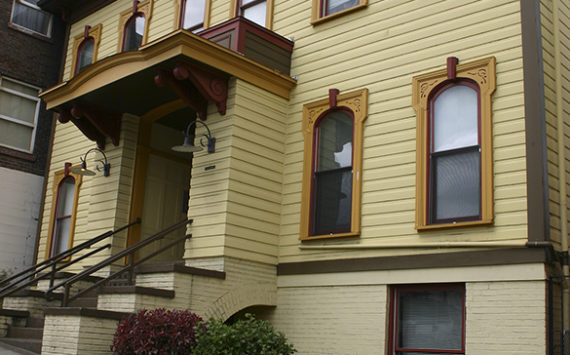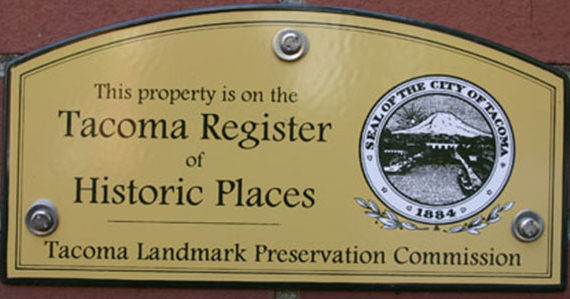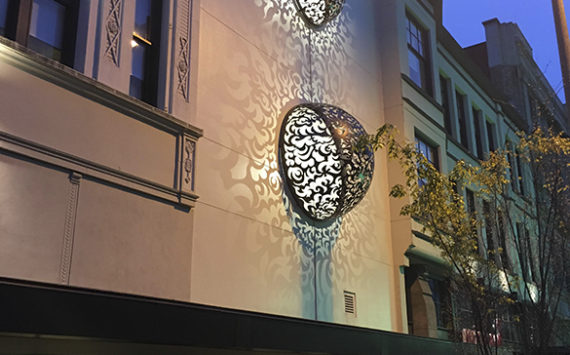Its hardly cliché to say The Camera Shop on Pacific Avenue is a Tacoma landmark. The store, which opened in 1937, stands today as the oldest retail store on this busy traffic corridor. Tourists, photographers and camera enthusiasts as far north as Vancouver, B.C. and as far south as the Oregon-Washington border make the trek to this crowded shop.
But history and longevity arent enough to keep the store afloat these days. Business has dropped off dramatically, and the cause of this decline points to one thing: Pacific Avenue roadwork.
I had the best July in ten years, and the worst August in ten years, says Ed Elliott, referring to the period last summer before and after street repairs and utility upgrades started outside his shop. Elliott reports that business has decreased 35% to 50% since the work began. Its a figure he describes as severe.
Elliott is wondering how much longer he can endure the roadwork and remain in business. There is no parking in front, no parking on the side, he explains, his voice echoing through the empty shop. I feel like Im paddling upstream with a spoon.
PACIFIC AVENUE REDUX
For Elliott and other shop owners on Pacific Avenue, the troubles began last summer when the city announced plans for the Pacific Avenue project, which included re-paving the street and upgrading the water and sewer lines along the corridor from South 7th Avenue to South 17th, and from South 25th to South 28th. Lower Pacific Avenue is a paved washboard that tests a cars suspension, read an announcement released by the city last July. This project will smooth out the current substandard pavement, and install much-needed water and sewer lines.
Work on Pacific Avenue was started in July, after completion of the Pierce Transit Tacoma Link light rail, in order to minimize disruption downtown. Because funding for the project was provided in part by federal grants stipulating that said money must be used by the end of this year, merchants had a break of barely 10 months between the end of construction on the Light Rail project and the start of work on Pacific Avenue.
The city recognized the impact this project would have on its merchants, and outlined a plan for alleviating congestion. This plan included working only at night and only in two-block increments; placing signs throughout the area to indicate that businesses would be open during construction; creating detour routes; leaving sidewalks open 24 hours; combining road and utility improvements into one project; and holding weekly status meetings with merchants, contractors, and city representatives.
Still, several aspects of this project immediately impacted business owners. First, most (if not all) of the parking along Pacific Avenue was eliminated. Tractors and construction equipment sat on one side of the street; No Parking signs sat on the other side of the street. Second, detour routes and the site of tractors tearing up the avenue deterred shoppers.
One example of this is La Costa Mexican Restaurant. The restaurant is barely visible behind four tractors, nearly a dozen traffic cones, a steel-plated catwalk, and safety netting. Three signs announce that the business is open during construction, but it hasnt helped. Earlier this week, the owner reported a 75% drop in revenue. He had to trim his staff from 9 employees, down to 3 employees.
Its killing me, he said. The downtown lunch crowd has thinned, according to the owner. Families who used to frequent the restaurant for dinner (and take advantage of free parking) have disappeared. Customers think were closed, he added.
DOWNTOWNS GROWING PAINS
To be sure, woes along the avenue and throughout the downtown core dont point entirely to Pacific Avenue roadwork.
The urban core has seen a tremendous amount of development in a relatively short amount of time. The most significant projects recently completed include the Museum of Glass (opened July 2002), the Tacoma Art Museum (opened May 2003), and the Pierce Transit Tacoma Link light rail (construction was completed August 2003). Currently, three projects underway have contributed to congestion downtown: the Greater Tacoma Convention and Trade Center (scheduled to open November 2004), Rainier Bank (scheduled to open by years end), and the Marriott Courtyard Tacoma Downtown (scheduled to open January 2005).
Reasonable building prices, low interest rates, and the growing appeal of downtown living have resulted in more than a billion dollars worth of development downtown. Its difficult to walk downtown without spotting a construction crane or hearing the sounds of hammers and cement trucks.
Simply put, its tough being a downtown merchant these days. The impact of Pacific Avenue roadwork only adds to the challenge.
I think merchants are frustrated, says Mollie Lesh, Community Relations Specialist in the Economic Development Department at the City of Tacoma. But I also think they understand it is for the overall good. It will give us a downtown that is more accessible and ultimately better for the businesses.
Lesh leads a regular meeting between contractors, the city, and downtown merchants to provide an open line of communication with the businesses affected by the Pacific Avenue upgrades. The meetings are informal, the mood is respectful. At a meeting last Friday, representatives from Mid-Mountain Construction (the contractor on the project) updated merchants on progress and recent developments. The topics ranged from the impact on area residents regarding construction at night, a bus stop closure in the affected zone, and clarification around No Parking signs along the avenue.
Most merchants are focusing on the upcoming holiday season and, more importantly, the projects deadline. Improvements are scheduled to be completed by mid-November, just in time for the traditional holiday shopping season. The improved accessibility along Pacific Avenue combined with a spending boost from consumers will hopefully result in an economic recovery for merchants affected by the roadwork.
We do know that it has impacted businesses and residences downtown, says Lesh. But its necessary in terms of improving the avenue.







